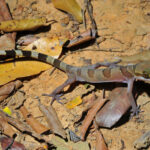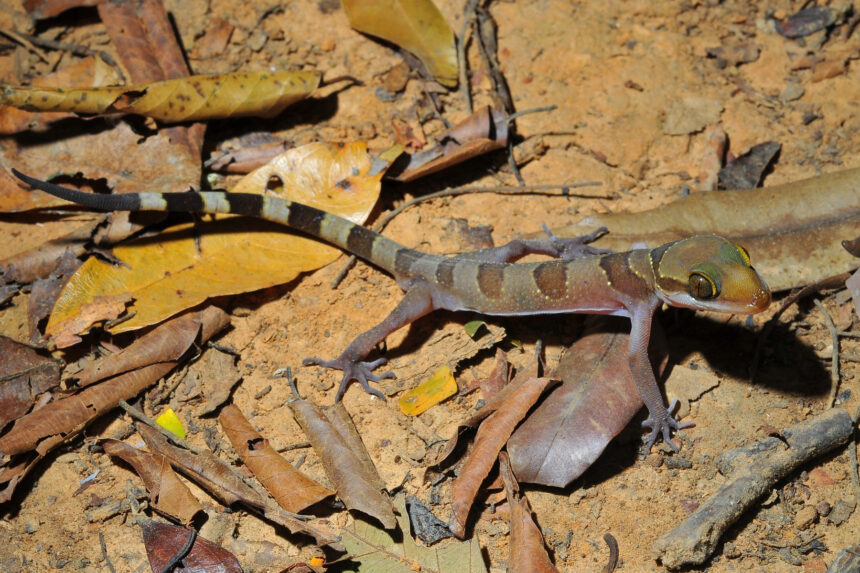In northeastern Thailand, researchers have identified a gecko that had been moving unseen for years. From afar, it blended into the bark, its light brown body marked with dark bands edged in yellow, appearing like any other forest inhabitant.
The discovery was published in Zootaxa, led by Natee Ampai of Srinakharinwirot University.
As researchers observed it more closely, its bent toes and strong claws became apparent, hinting at something unusual. Those claws allow the gecko to climb branches and uneven surfaces that other species cannot, which explains why it had remained hidden and drew the researchers’ attention.
The Sakaerat Biosphere Reserve, where it was detected, stretches across dry evergreen and mixed deciduous forests as well as dry dipterocarp patches. About 150 miles northeast of Bangkok, it is recognized by UNESCO for its ecological value.
Also Read: Amazing Dome-Headed Dinosaur Fossil Unearthed in Mongolia
Many animals remain concealed during the day, becoming active at night, and the gecko moves cautiously through this environment. Its moderately wide head, long snout, and large brown eyes rimmed in yellow help it track prey and detect threats. Each step relies on the surfaces around it, showing how adapted it is to its surroundings.
Physical traits suggested it might represent a distinct species, and DNA analysis corroborated this. Genetic tests revealed a 6–29% divergence from its closest relatives, and scale patterns along the lips, rows of small bumps on the back, and plates under the fourth toe further validated its uniqueness. Naming it Cyrtodactylus sakaeratensis formalized months of careful observation and study.
Watching it in its habitat demonstrates how finely tuned it is to the forest. Every motion, every pause, fits into a system shaped by survival in this environment.
The discovery underscores the importance of the Sakaerat Biosphere Reserve. Each species depends on its environment, and every adaptation plays a key role. Losing the forest would put the gecko at risk, and losing the gecko would affect the broader ecosystem.
Scientists emphasize that ongoing research and conservation are essential to keep species like C. sakaeratensis part of these forests.
Story Source: Ampai et al. (2025), published in Zootaxa. Read the study here.







